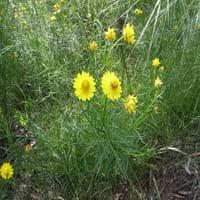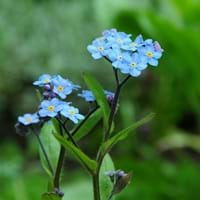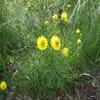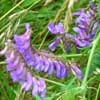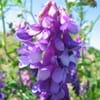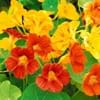Life Span
Annual
Annual and Perennial
Type
Flowering Plants, Herbs
Flowering Plants, Shrubs
Origin
Australia
Eastern Asia
Types
Not Available
Bigleaf hydrangea, Hortensia, Smooth hydrangea, Oakleaf hydrangea, Annabelle
Number of Varieties
Not Available
Habitat
Terrestrial
Fields, gardens, meadows, rocky outcrops, waste ground, yards
USDA Hardiness Zone
10-11
Not Available
AHS Heat Zone
12 - 3
8 - 1
Habit
Cushion/Mound-forming
Clump-Forming
Flower Color
Orange, Gold
Blue, White
Flower Color Modifier
Bicolor
Bicolor
Fruit Color
Non Fruiting Plant
Not Available
Leaf Color in Spring
Green, Dark Green
Green, Gray Green
Leaf Color in Summer
Green, Dark Green
Green, Gray Green
Leaf Color in Fall
Green, Dark Green
Green, Gray Green
Leaf Color in Winter
Light Green
Light Green
Leaf Shape
Lobed
Lanceolate
Plant Season
Summer, Fall
Spring, Summer
Sunlight
Full Sun
Full Sun, Partial Sun
The pH of Soil
Neutral
Acidic, Neutral
Soil Drainage
Well drained
Well drained
Bloom Time
Spring, Late Spring, Early Summer, Summer, Late Summer, Early Fall, Fall, Late Fall
Early Spring, Spring, Late Spring, Early Summer, Summer, Late Summer
Tolerances
Drought
Not Available
Where to Plant?
Container, Ground
Ground
How to Plant?
Seedlings
Divison, Seedlings
Plant Maintenance
Low
Medium
Watering Requirements
Needs less watering
Do Not over Water
In Summer
Lots of watering
Lots of watering
In Spring
Moderate
Moderate
In Winter
Average Water
Average Water
Soil pH
Acidic
Acidic, Neutral
Soil Type
Well-aerated
Loam
Soil Drainage Capacity
Loam, Well drained
Well drained
Sun Exposure
Full Sun
Full Sun, Partial Sun
Pruning
Remove damaged leaves, Remove dead branches, Remove dead leaves
Remove damaged leaves, Remove dead branches, Remove dead leaves
Fertilizers
General garden fertilizer
All-Purpose Liquid Fertilizer
Pests and Diseases
Pests and diseases free
Red blotch
Plant Tolerance
Drought, Heat Tolerance
Drought
Flower Petal Number
Single, Double
Single
Foliage Texture
Medium
Medium
Foliage Sheen
Matte
Matte
Attracts
Not Available
Bees, Flies
Allergy
no allergic reactions
Chest tightness, Diarrhea, Dizziness, Nausea, Vomiting
Aesthetic Uses
Showy Purposes, Water gardening
Beautification, Cottage Garden, Ground Cover, Showy Purposes
Beauty Benefits
Good for the Scalp, Removes dandruff, Stops hair loss
Not Available
Environmental Uses
Air purification
Air purification
Medicinal Uses
anti-allergy, anti-inflammatory, Antiseptic, Antispasmodic, Fungicidal
Fever, Kidney problems, Urinary tract problems
Part of Plant Used
Flowers
Flowers, Root
Other Uses
Oil is used for aromatherapy, Used for its medicinal properties
Culinary use, Used as Ornamental plant
Used As Indoor Plant
No
No
Used As Outdoor Plant
Yes
Yes
Garden Design
Bog Garden, Lawns and Turf
Bedding Plant, Cottage garden, Edible, Hanging Basket, Wildflower
Botanical Name
XEROCHRYSUM bracteatum 'Copper'
Myosotis arvensis
Common Name
Dreamtime Copper Strawflower, Strawflower
Forget-Me-Not
In Hindi
strawflower
Forget-Me-Not
In German
Strohblume
Forget-Me-Not
In French
strawflower
Forget-Me-Not
In Spanish
strawflower
Arce japonés
In Greek
strawflower
Forget-Me-Not
In Portuguese
strawflower
Forget-Me-Not
In Polish
strawflower
Forget-Me-Not
In Latin
strawflower
Forget-Me-Not
Phylum
Magnoliophyta
Magnoliophyta
Class
Magnoliopsida
Magnoliopsida
Family
Asteraceae
Boraginaceae
Genus
Xerochrysum
Myosotis
Clade
Angiosperms, Asterids, Eudicots
Not Available
Tribe
Gnaphalieae
Not Available
Subfamily
Asteroideae
Not Available
Properties of Strawflower and Field Forget Me Not
Wondering what are the properties of Strawflower and Field Forget Me Not? We provide you with everything About Strawflower and Field Forget Me Not. Strawflower doesn't have thorns and Field Forget Me Not doesn't have thorns. Also Strawflower does not have fragrant flowers. Strawflower has allergic reactions like no allergic reactions and Field Forget Me Not has allergic reactions like no allergic reactions. Compare all the properties and characteristics of these two plants. Find out which of these plant can be used as indoor plant. If you are interested to decorate your house and garden, find out aesthetic uses, compare them and select the plant which will beautify your surrounding. Along with beautification, try comparing medicinal and edible uses of Strawflower and Field Forget Me Not and you can choose the plant having best and most benefits.
Season and Care of Strawflower and Field Forget Me Not
Season and care of Strawflower and Field Forget Me Not is important to know. While considering everything about Strawflower and Field Forget Me Not Care, growing season is an essential factor. Strawflower season is Summer and Fall and Field Forget Me Not season is Summer and Fall. The type of soil for Strawflower is Loam and for Field Forget Me Not is Loam while the PH of soil for Strawflower is Neutral and for Field Forget Me Not is Acidic, Neutral.
Strawflower and Field Forget Me Not Physical Information
Strawflower and Field Forget Me Not physical information is very important for comparison. Strawflower height is 25.40 cm and width 30.50 cm whereas Field Forget Me Not height is 25.00 cm and width 25.40 cm. The color specification of Strawflower and Field Forget Me Not are as follows:
Strawflower flower color: Orange and Gold
Strawflower leaf color: Green and Dark Green
Field Forget Me Not flower color: Blue and White
- Field Forget Me Not leaf color: Green and Gray Green
Care of Strawflower and Field Forget Me Not
Care of Strawflower and Field Forget Me Not include pruning, fertilizers, watering etc. Strawflower pruning is done Remove damaged leaves, Remove dead branches and Remove dead leaves and Field Forget Me Not pruning is done Remove damaged leaves, Remove dead branches and Remove dead leaves. In summer Strawflower needs Lots of watering and in winter, it needs Average Water. Whereas, in summer Field Forget Me Not needs Lots of watering and in winter, it needs Average Water.
